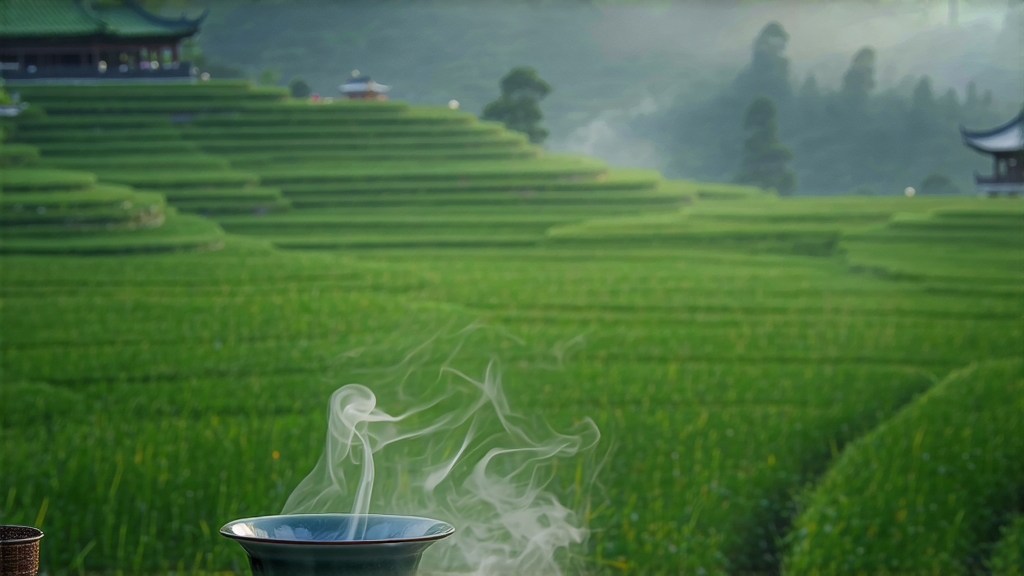
Hidden above the perpetual cloud belt that crowns Sichuan’s western rim, the old Meng Ding mountain has been whispering tea secrets for twelve centuries. Among those secrets, the most delicate is Meng Ding Huang Ya—literally “Meng Ding Yellow Bud”—a yellow tea so refined that Song-dynasty court poets compared its liquor to “liquid dawn filtering through jade curtains.” Today, outside China, yellow tea remains the least encountered of the six great tea families, and Meng Ding Huang Ya is its rarest ambassador. To understand this tea is to step into a micro-climate where altitude, history, and human patience intersect.
History: from tribute to obscurity and back
Meng Ding Shan was already famous when Lu Yu penned The Classic of Tea (758 CE). The monk Wu Li Zhen is said to have planted seven tea bushes on the summit during the Gan Lu era (53 BCE), and those bushes—still venerated—became the genetic ancestors of Huang Ya. By the Song period (960-1279), local magistrates froze spring dew in silver jars so that horse messengers could race the first kilogram of Huang Ya to Kaifeng palace before the Qingming festival. Imperial favor continued through Ming and early Qing, but the intricate “sealed yellowing” technique was gradually simplified into green-tea production to meet rising demand. The authentic process survived only in family workshops above 1,000 m, and by the 1980s fewer than 200 kg were being made per year. A 2004 government-led revival project persuaded aging masters to train a new generation, and today about 1,500 kg of authentic Meng Ding Huang Ya reach the global market annually—still microscopic, but enough for curious drinkers abroad to taste history.
Terroir: where clouds press the leaf
The garden zone sits between 950 m and 1,400 m on the windward flank of the Tibetan Plateau. Frequent cloud cover reduces photosynthesis, raising amino acids (especially L-theanine) while muting catechins, the compounds responsible for astringency. Night temperatures can drop 12 °C below daytime highs, locking floral precursors inside the tender buds. Soils are yellow-brown laterite rich in iron and potassium, drained by mountain bamboo roots that keep the ground soft and breathable. The result is a leaf that is biologically “sweet” before human hands ever touch it.
Plucking: one bud, one leaf, one dewdrop
The picking window opens around March 20 and closes before April 5, when the Qingming festival marks the cutoff for “pre-ming” teas. Only the standard “one bud and one unfolded leaf” is taken, ideally before 9 a.m. while dew still glistens. Experienced pickers use a twisting motion rather than a snap, preventing the minute bruises that would oxidize the bud tip red. Leaves are placed in shallow bamboo sieves lined with hemp cloth; stacking deeper than 3 cm risks premature fermentation. Within two hours the harvest must descend the mountain to the village workshop—any longer and the metabolic clock drifts, making the subsequent yellowing stage unpredictable.
Craft: the art of “men huang” (sealed smothering)
Yellow tea’s soul lies between green and oolong: kill-green heat halts oxidation, yet a post-heating humid rest allows non-enzymatic yellowing that mellows grassiness into chestnut and orchid. Meng Ding Huang Ya follows five meticulous steps:
-
Gentle kill-green: 180 °C woks, bamboo-fired
Leaves are tossed by hand for 3–4 minutes, 20 °C cooler than typical green-tea woks. The lower temperature preserves internal moisture needed for the yellowing phase. -
Initial rolling: no pressure, only shaping
A light 5-minute roll on bamboo mats aligns the bud’s needle shape without rupturing cell walls; juice release is kept below 8 % to avoid browning. -
First piling: the “first seal”
The warm leaves are stacked in a hemp-lined wooden box (30 cm depth) and covered with wet calico. For 40–60 minutes the core temperature climbs to 38 °C, triggering Maillard reactions that turn chlorophyll into pheophytin, shifting color from vivid green to pale primrose. -
Second firing: 80 °C, fingers faster than tongues
Leaves are quickly dried for 3 minutes to reduce moisture to 20 %. This “shock” locks in the newly formed